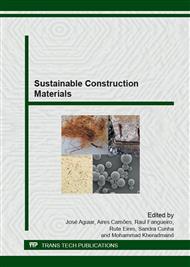p.54
p.62
p.72
p.85
p.97
p.113
p.121
p.131
p.139
Waste Management in the Reform and Adequacy of the Maracanã Stadium for the FIFA Football World Cup 2014
Abstract:
This work aims to contribute to the minimization of solid construction waste at construction sites through the application of sustainability concepts in the construction industry, addressing the recommendations of the LEED certification. The object of study was the works of reform and adaptation of the Maracanã Stadium, venue of the final match of the 2014 FIFA World Cup. The methodology consists of visits to the construction site of the stadium, interviews with responsible people for the jobs and data analysis collected by the Maracanã Consortium Rio 2014 Report. Based on the data collected, it was evaluated the used strategies and tools in the construction to minimize the generation of waste. It was found that the strategies were well executed, contributing to the reduction of waste at the construction site and to the sustainable disposal of the generated waste. The strategies involved environmental, social and economic aspects, giving the construction an international certification for sustainable building.
Info:
Periodical:
Pages:
97-112
Citation:
Online since:
December 2014
Keywords:
Price:
Сopyright:
© 2015 Trans Tech Publications Ltd. All Rights Reserved
Share:
Citation:


